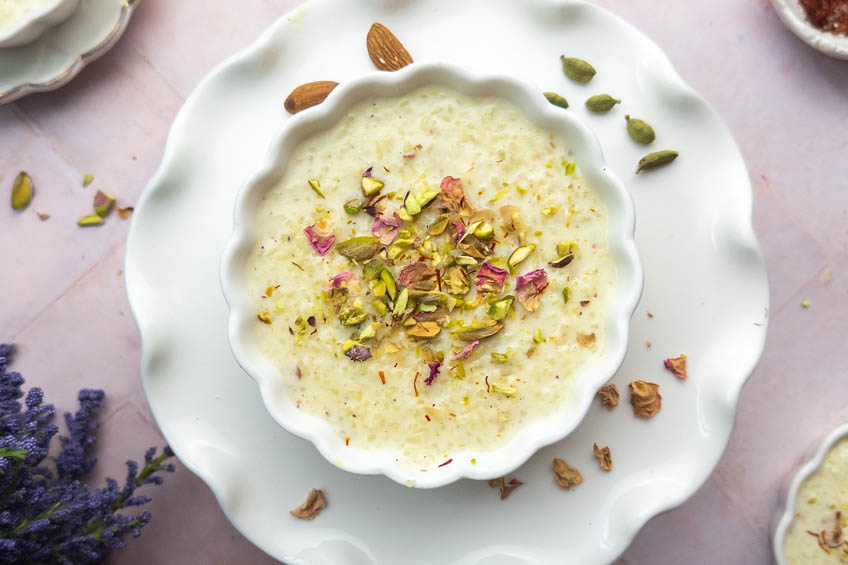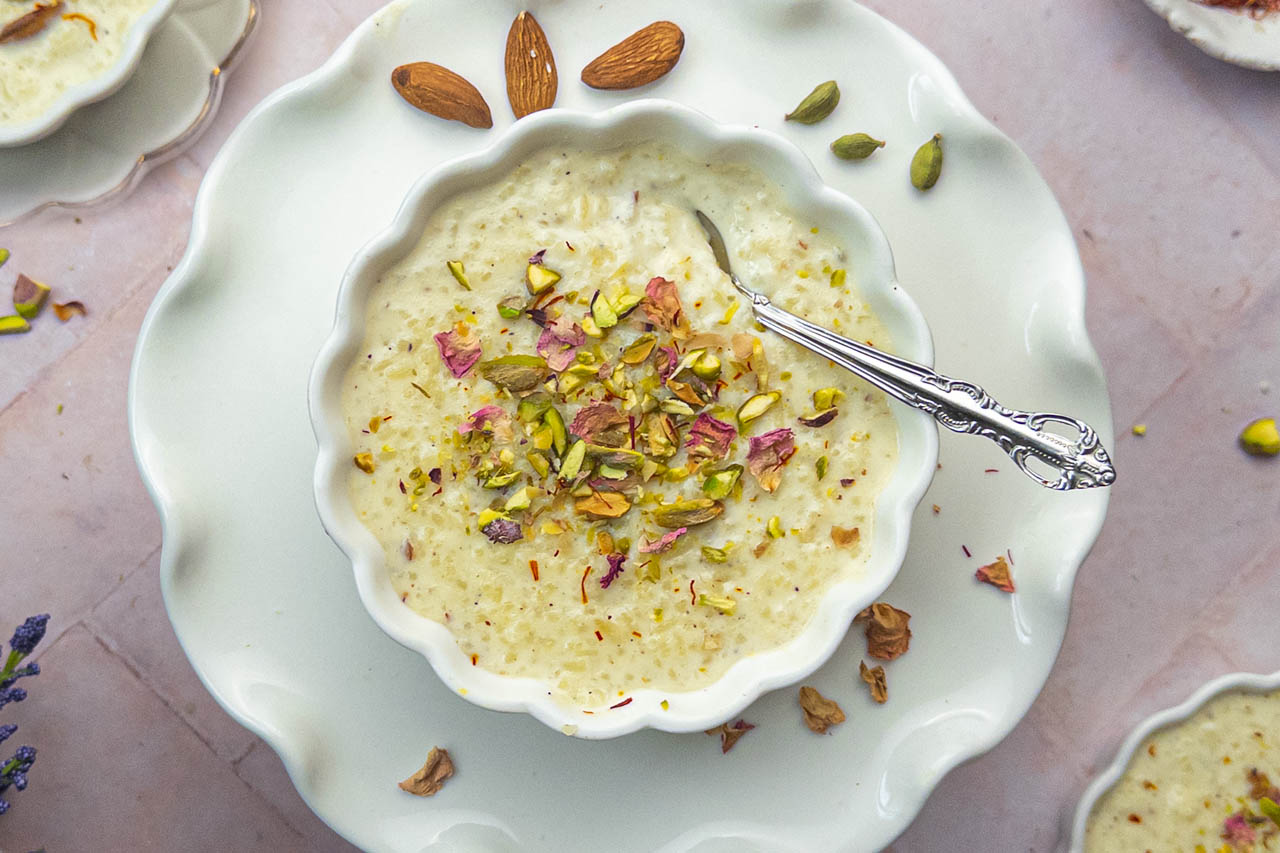
Muslims around the world are preparing for the month of Ramadan, which begins around March 10 this year. Ramadan is a month of fasting, prayer, charity, and community. For up to 30 days, we fast from just before dawn to sunset. Refraining from food, water, and other vices — and actively and intentionally engaging in acts of charity, kindness, and worship. Ramadan is a time of deep reflection, spiritual connection, and communal joy.
Long fasting days end at sunset, where the fast is opened with a sweet date and thirst is quenched with a glass of cold water, followed by a savoury meal which often includes samosas, savoury hand pies and the like, and just about any other meal one might crave.
Dessert is a large part of any celebration, and Ramadan is no different. Kheer is a popular dish that’s often enjoyed as a cool treat to end the night, and for many it’s a decadent dish on Eid. Kheer is a sweet and fragrant dessert from the Indian subcontinent that is made with milk and most commonly rice or toasted vermicelli (called seviyan kheer). It’s similar to rice pudding, with the addition of the delicate flavours of rose, saffron and pistachio, popular flavours across South Asia and the Middle East. It’s a humble dessert, that can be made with as few as three ingredients, but a labour of love to get it just right. During celebrations, nuts, raisins, saffron, rose water, and often condensed milk are added to create a luxurious texture to match the occasion.
This is my version: it’s creamy, nutty, not too sweet and so nostalgic of the one I grew up enjoying as a child. It can be served warm, cold, or at room temperature. Sharing with loved ones is non-negotiable.
ingredients
To garnish
directions
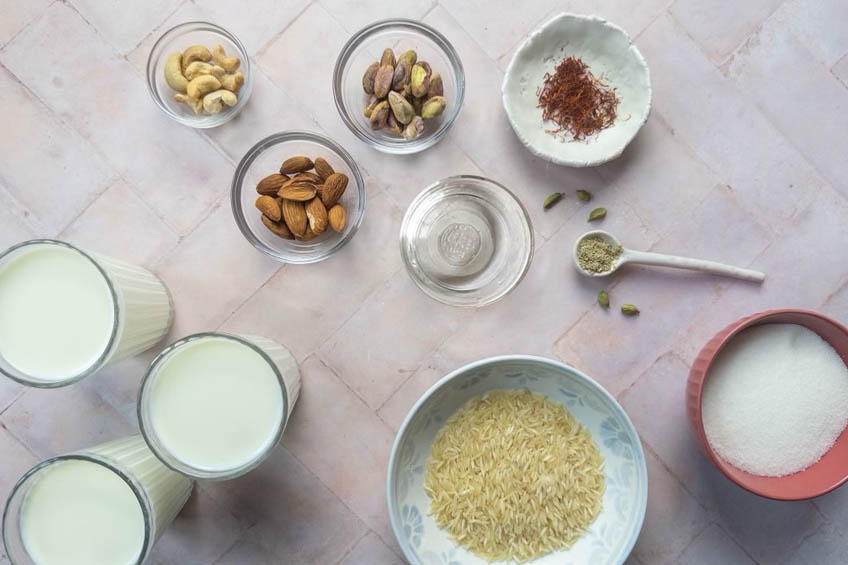
In a medium sized bowl, soak the washed rice in water and let sit for at least 30 minutes. This helps the rice plump up, and is an important step in making kheer.
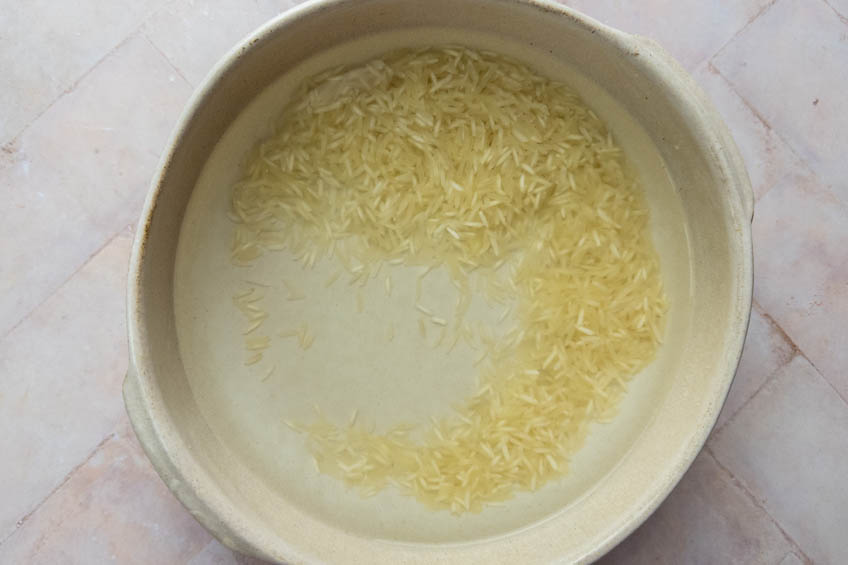
While the rice soaks, place a pinch of saffron in a small bowl, grinding it between your fingers to create a rough powder. Pour 1 tablespoon of hot milk over top and set aside.
Coat the bottom of a heavy bottomed pot (preferably stainless steel), with water, about 2 tablespoons. This will help prevent the milk from scalding. Turn the heat up to medium high, and pour the 4 cups of milk in.
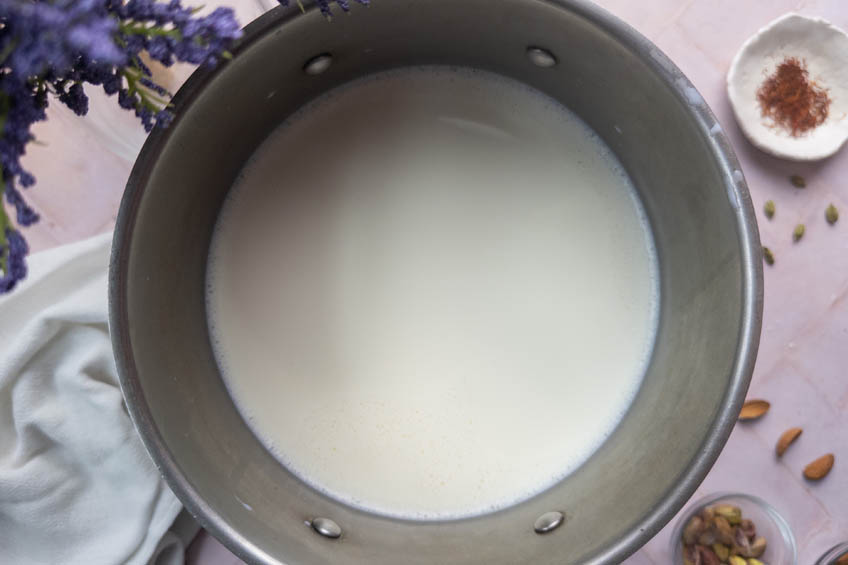
Bring the milk to a mild simmer, stirring often, and turn the heat down to low-medium. Continue to stir the milk to prevent it from sticking to the bottom of the pot, and until the milk has reduced by about ¼, about 15 minutes.
Strain the soaked rice, discarding the water, and pour the rice into the pot of milk.
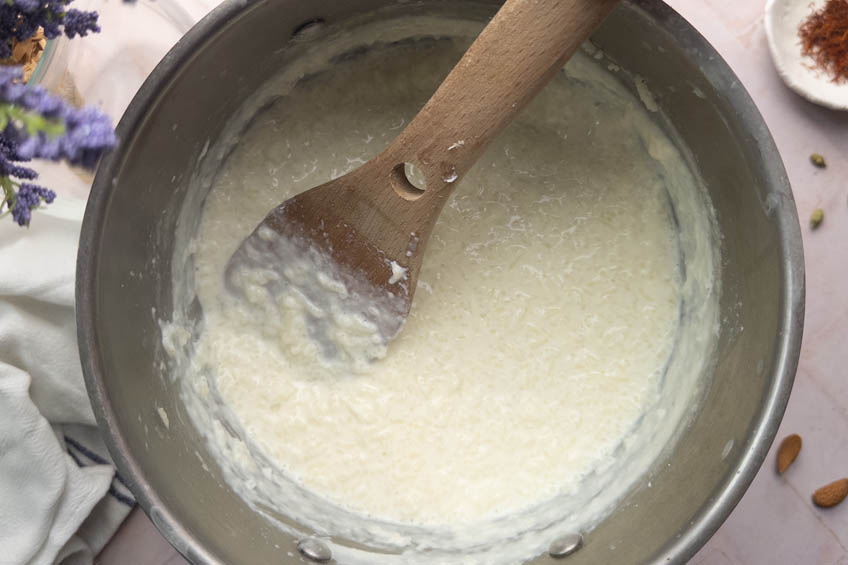
Turn the heat up very slightly, closer to medium, and cook until the rice has plumped, can be easily mashed and the milk has reduced further, stirring consistently. This should take about 25-30 minutes.
To test: When the bottom of the pot is scraped with a wooden spatula, the kheer should be thick enough to not rush back to the centre and runny enough that it doesn’t take more than 1-2 seconds for it to move in. It is okay to add more milk, as desired, at this point. Add 1 tablespoon at a time, just to loosen the kheer up, if necessary.
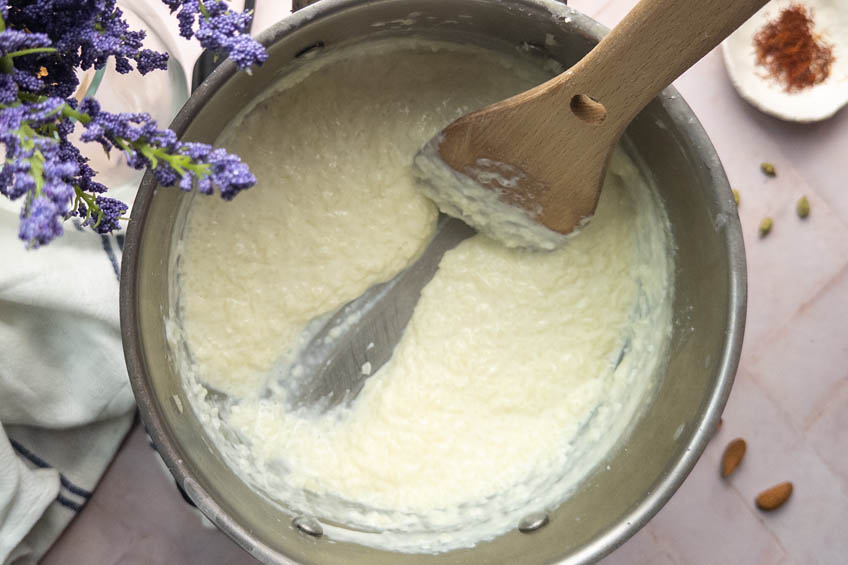
Add in the saffron soaking in milk, rose water, almonds, cashews and cardamom. Mix well and cook for 5 minutes, stirring often.
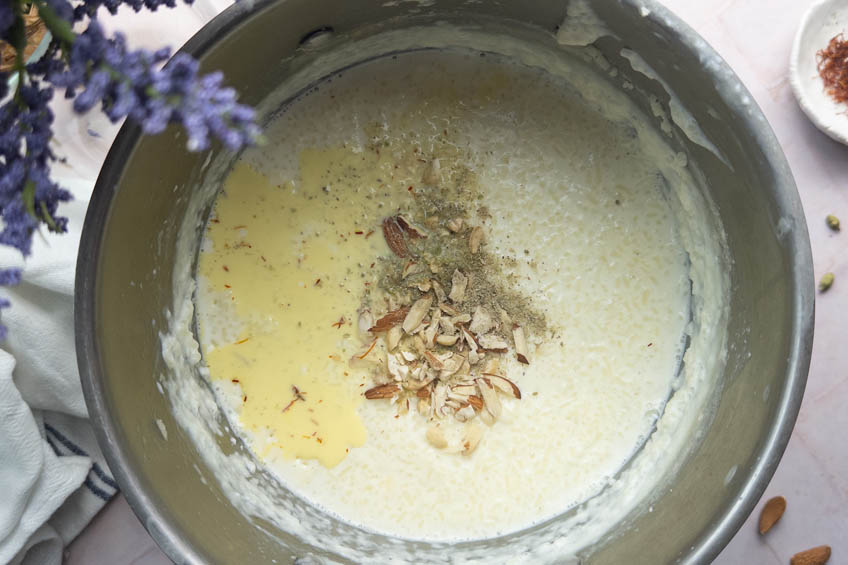
Add ¼ cup sugar and mix well for 1 minute. Taste and add in the rest of the sugar if desired. The kheer tastes sweeter while it’s warm, and will balance out once cooled.

Serve in a large bowl or individual cups. Garnish with pistachios, rose petals and saffron strands.
